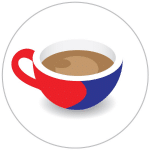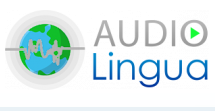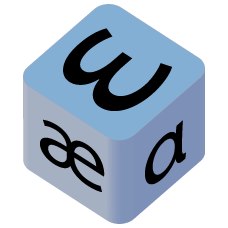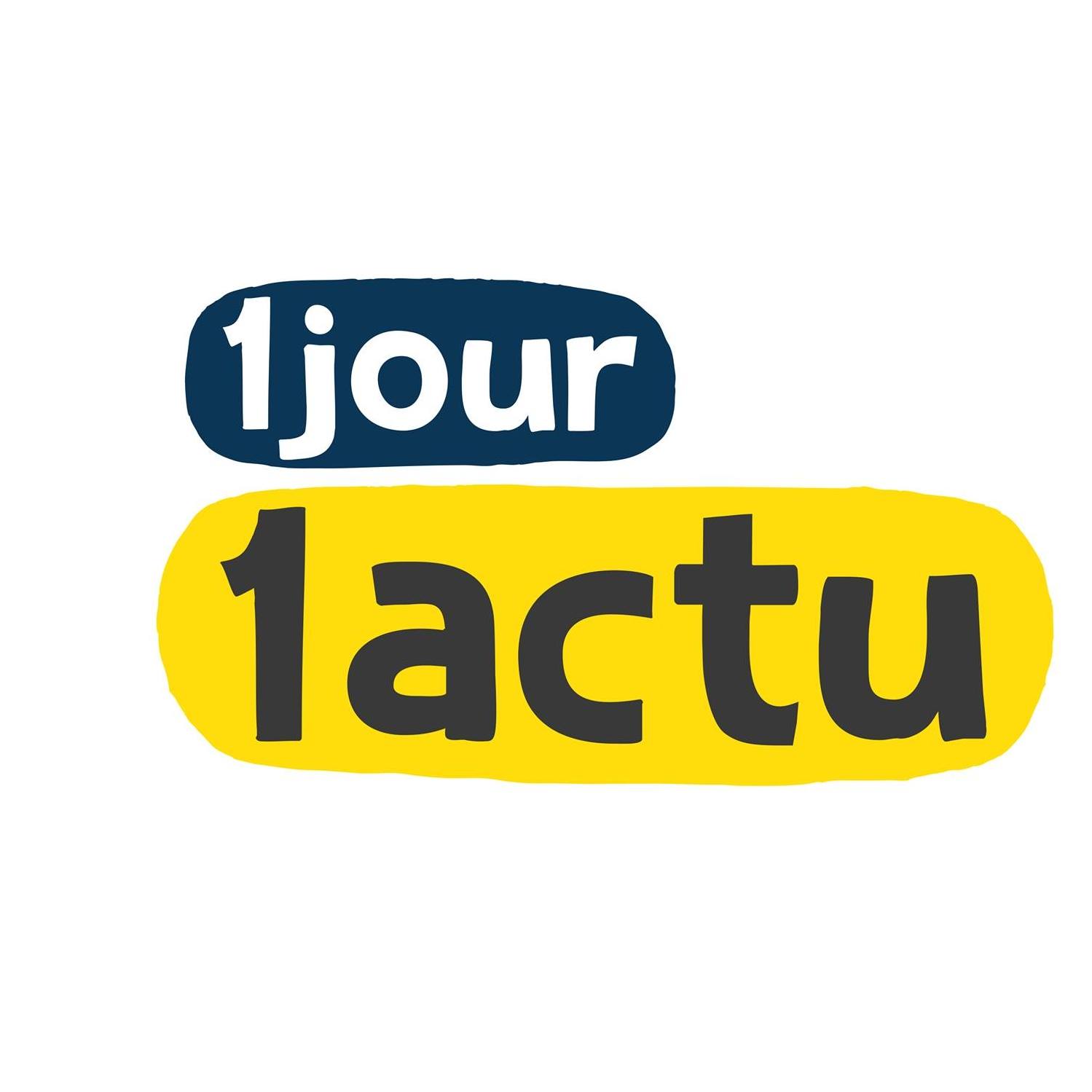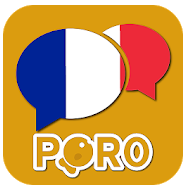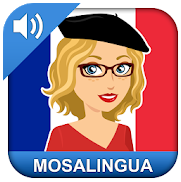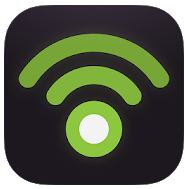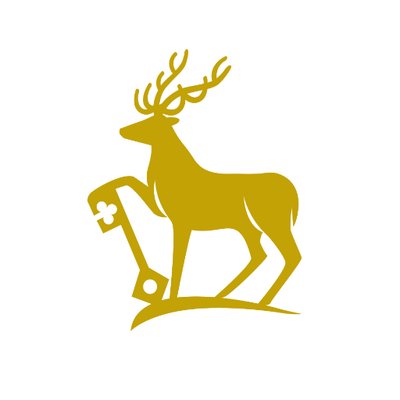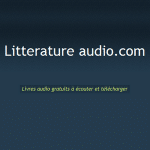
French Listening Practice: 58 Sites for Beginner to Advanced Learners
To understand spoken French, you’ve gotta listen to French.
Lucky for you, the internet is a magical place, ripe with opportunities to practice your French more effectively.
You can listen to French with music, with talk radio and even with podcasts. Here are the top 58 online places for French listening where you can do just that and more!
Contents
- French Listening Resources for All Levels
- Beginner French Listening Resources
- Education Scotland
- EasyPronunciation.com
- A Green Mouse – French Stories for Children
- 990 French Short Dialogues Practice – Improve Speaking Skills
- Comme une Française (Like a French Woman)
- Extr@ French
- Le point du FLE
- Speechling
- 1 Jour, 1 Actu (1 Update a Day)
- Teachit Languages
- Lang Practice
- French – Listening And Speaking App
- MosaLingua
- TuneIn
- Defense Language Institute Foreign Language Center
- Français eXtra (French eXtra)
- frenchtoday
- MODdou
- Learn French with Alexa
- Learn French in Your Car
- 101 Languages French
- Oh La La I Speak French
- C CUBE Academy
- Intermediate French Listening Resources
- Advanced French Listening Resources
Download: This blog post is available as a convenient and portable PDF that you can take anywhere. Click here to get a copy. (Download)
French Listening Resources for All Levels
News in Slow French
News in Slow French is completely true to its name.
It offers interesting pieces of news in slow French for learners who want to practice their listening skills.
The content is divided into three levels (Beginner, Intermediate and Advanced). There are two additional sections: “Grammar and Expressions,” along with “Series,” where you can listen to podcasts on topics such as meditation or poetry, among others.
This site is one of the best French listening resources, but there’s a catch: You can only listen to the first 30-60 seconds of each recording for free. To access all of the content, you’ll have to get a monthly subscription.
RFI Savoirs (RFI Knowledge)
RFI Savoirs is a website created by Radio France Internationale (Radio France International), a top French broadcaster.
It’s a directory of nearly 1,000 listening clips and corresponding exercises for learners of French at various levels.
Each lesson begins with an audio clip running one to 10 minutes in length, followed by multiple-choice exercises. Learners can also access a complete transcript in French.
Topics are diverse—you might delve into antibiotic resistance, robots in hospitals or street art, for example.
The lessons can be sorted by level from A1 (beginner) to C2 (high advanced) as well as by topic.
New lessons are added regularly as RFI continues to produce news content, so this is truly an evergreen resource for French listening comprehension.
ToLearnFrench.com
For those who don’t know, a dictée (dictation) is a French listening exercise in which you listen to a recording of spoken French and then write down exactly what you heard.
This isn’t exactly easy because French has a lot of silent letters—to the point that a word can sound almost nothing like the way it’s spelled. For example, a lot of nouns and adjectives have an extra silent -e or -s, while verbs can have -es or -ent. In this way, dictées are good for listening to French and practicing grammar.
Conveniently, ToLearnFrench.com has over 400 dictées for you to practice listening to French. Each also has an answer key for you to check what you heard (and make sure you made all those pesky agreements properly!).
Kwiziq
Kwiziq is a fun and user-friendly website where you can practice your French listening with two types of exercises: bilingual readers and dictations.
The bilingual readers are short articles that you can read and listen to at the same time. This type of exercise can be done when you don’t feel like typing.
The dictations are much more useful, though.
You choose a topic and start typing as you listen to some sentences. After each sentence, you can check how you did.
Most importantly, you’re given a list of the grammar aspects included in that sentence! If you want to review a grammar topic or know more about it, just click on it and you’ll be redirected accordingly.
Kwiziq has some free bilingual readers and dictations available, but if you want to enjoy all the premium features, you need to buy a subscription.
Lawless French
Run by the French translator and teacher Laura K. Lawless, Lawless French offers many resources for conquering French grammar, speaking and listening.
Its listening exercises are for learners of all levels, with topics such as travel, geography and history.
For each level of proficiency, Lawless French offers tests so that learners can know what level they’re at, and make appropriate study changes accordingly.
Coffee Break French
Coffee Break French is a spectacular podcast every French learner can use, regardless of their level.
The episodes are divided into four seasons and a course. These correspond to five levels:
- S1—Absolute beginners
- S2—Lower intermediate
- S3—Upper intermediate
- S4—Advanced learners
The course La Vérité éclate toujours (Truth always breaks out) was created for upper-advanced students who want to challenge themselves.
The topics covered range from meeting friends and going shopping to ordering drinks and answering emails, and the grammar and vocabulary get more challenging as you progress through the different seasons.
The audio of the episodes of this podcast is free, but additional premium content—such as video lessons, lesson notes and grammar explanations—can be bought.
Français avec Pierre (French with Pierre)
Français avec Pierre is one of my students’ favorite YouTube channels for a reason.
Pierre is an amazing teacher who’ll take you on a trip across the French language to teach you about pronunciation, vocabulary, grammar, culture and cooking, among other things.
The videos are completely in French, from the ones for absolute beginners to the ones where he travels around the world or interviews different guests.
He has plenty of video material for all levels, and his videos can be used not only to improve your listening comprehension skills, but also other language skills.
I recommend you have a look at his playlists. My personal favorites are the one devoted to grammar (grammaire) and the one on vocabulary and expressions (vocabulaire et expressions).
ielanguages.com
This website has been a personal favorite of mine not only for learning French, but also for other Indo-European languages.
Though there are tutorials for more than 20 languages, French is the primary focus. It has the largest amount of resources, which include a French language tutorial and an e-book on informal and spoken French.
Both of these products come with audio files that feature native French speech.
The e-book on informal French comes with slang, fill-in-the-blank exercises, transcripts and audio files, among other awesome stuff.
FluentU
FluentU is a virtual immersion tool that bases its language lessons on authentic videos that native French speakers actually watch. The content includes funny commercials, soap opera clips, vlogs from popular creators and everything in between, so the vocabulary and language used are quite varied.
Videos come with a full transcript (with audio pronunciation of each word), a list of key vocab and optional subtitles in English and French.
While watching a video, you can hover your mouse over a word to check its meaning. Or, click on it for a more detailed exploration, including grammar info, example sentences and video clips that use the word.
You can add new vocabulary words to flashcard decks, and review them with quizzes that use a spaced repetition system (SRS) algorithm to improve word retention. Plus, there’s an app for iOS and Android device users.
Linguno
Linguno is a language learning website with French listening exercises that adapt smartly to your level. These are based on dictation–a French sentence is read out loud, then you have to type it out.
Once you hit submit, Linguno gives you the correct French sentence plus the English translation. What’s cool about it is that you can click on any word in the French sentence to see its definition and grammar info, like conjugations. Then you rate how difficult the question is so the website can adjust its exercises, keeping you constantly challenged.
Since it’s still in beta, it’s completely free at the moment. You can do unlimited exercises just by signing up.
For more listening practice, head over to their old website, ListeningPractice.org. There are even exercises there for practicing with literary texts if you’re an advanced learner!
FrenchPod101
There are several different ways in which you can practice your French with FrenchPod101. But if you just want to improve your listening skills and don’t want to create an account or pay for a subscription, you can simply watch FrenchPod101’s YouTube channel.
FrenchPod101 has a ton of videos on vocabulary, sentence structure, grammar, writing, French holidays, etc.
Something I don’t particularly like about FrenchPod101 though is that English tends to be very present in the videos (especially if they’re for beginners), but other than that, this channel is a great place to start listening to some French in an undemanding way.
If you want to make sure you listen to as much French as possible with FrenchPod101, just watch their 24/7 French TV channel.
Audio-Lingua
Audio-lingua is an excellent place to find native French listening material for study microsessions.
On the right side of the page, choose a level (niveau). I recommend leaving the type of voice (voix) and age () settings as they are in order to get more audio clips. You can choose a duration (durée) if you want.
After clicking on Rechercher (search), you’ll get all the audio clips that match your search settings, and all you have to do after that is listen to native French content for free!
You can also download all the clips in .mp3 format for free.
LyricsTraining
If you want to join your love for the French language with your love for music, LyricsTraining is for you.
With LyricsTraining, you’ll be able to practice your listening comprehension skills while listening to the music you love (in French, of course!).
Choose any of the music propositions you’ll get on the homepage or search for the French song you want to learn with. After you have your song, choose the game mode (i.e. the difficulty level of the exercises) and start listening and completing sentences.
Learn French by Podcast
Learn French by Podcast is a website that helps you to… well, learn French by podcast!
At its base, it’s a great way to listen to French for beginners because it revolves around a real French conversation regarding a certain topic. The conversation is then broken down, with explanations for the vocabulary and grammar used.
Learners can listen to the podcasts for free but must pay to use the lesson guides. These guides include a transcript, explanations of vocabulary and grammar points as well as translation and comprehension exercises.
Best of all, there are three levels of podcast lessons: beginner, intermediate and advanced. This means you’ll be able to use these podcasts for any stage of your French-learning journey.
French-resources.org
French-resources.org is a treasure trove of French listening exercises for learners. (While there’s a chance that the website might be under maintenance when you visit, its numerous activities are still available for access.)
It’s aimed at children and students of French, so it’s perfect for practicing listening comprehension in multiple contexts.
With a free sign-up, each lesson revolves around an audio recording. Next, students are asked to complete exercises, from multiple choice and fill-in-the-blank questions to recording answers or making a short presentation.
The lessons are sorted by beginner, intermediate or advanced levels and include topics such as “In a French Town” and “L’école d’Hô-Chi-Minh-Ville” (The School of Ho Chi Minh City). There are even grammar listening exercises for common verbs like être (to be)!
Rocket French
Rocket French is an audio course that consists of 20-minute lessons.
Each lesson is a short conversation between two characters followed by a breakdown of vocabulary and grammar. The conversations range from topics such as greetings to travel to food.
Once you’re done with the standard course, there’s also a language and culture course.
Aside from the audio lessons, you can get a full companion written grammar course to help you practice. Best of all, full transcripts from the lessons are available on the Rocket French website so you never miss a beat!
AudioFrench.com
AudioFrench is an online French audio dictionary. You can search up a word in French or English to get its translation and hear its pronunciation.
Beyond that, you can explore themed vocabulary lists and verb tables to hear how words and verb forms are pronounced.
Some words even have accompanying “Word Videos.” This can help speakers with the mouth formation of certain words, especially ones that feature the French “u” sound, as in sur (on).
There are also a few dialogues and travel logs in audio format for further French practice. Download these and listen to French on the go!
Ladictée
This site offers hundreds of dictation exercises primarily designed for native French speakers to improve writing and spelling skills.
Your options are organized by grade level. This system may not be as convenient for learners of French, but, as a general rule, the lower grade levels will offer simpler and shorter exercises than the higher levels.
On Ladictée, the narrator reads the script all the way through, then reads again, breaking the text into small parts and allowing you time to write.
And feel free to pause or play a portion again if necessary! A transcript is provided so you can readily check your answers.
Beginner French Listening Resources
Education Scotland
Education Scotland has 10 listening exercises aimed at young, beginner-level learners of French.
Each of the 10 exercises describes the everyday lives of a different French teenager, with topics ranging from school, geography and jobs to making a reservation at a restaurant.
Each recording also has a transcript so that learners can follow along.
EasyPronunciation.com
EasyPronunciation.com is a cute little site that has a lot to offer the learner of French.
You can use it to learn phonetic transcription, get word frequency statistics and even add pronunciation to subtitles, among other cool features.
But my favorite tool on the whole site is the French Pronunciation Trainer.
Just choose a native speaker and type a word to get its native pronunciation. Better yet, choose a sound and get lots of words including it (phonetic transcription included).
The site allows you to get 10 words for each sound for free, but you can subscribe to the site to get unlimited access to the advanced settings and create longer personalized lists.
There’s only one thing I don’t like about the site: it doesn’t include the translations of the words you listen to. However, if you use a good dictionary, that won’t be a problem at all.
A Green Mouse – French Stories for Children
This website is perfect for kids and for teachers who are looking for ideas to include in their classes.
A Green Mouse has plenty of children’s video stories any beginner learner can benefit from.
Before you access each story, you have a description (in English) about the topic and the grammar/vocabulary that can be learned with each specific video.
The best feature of the site, apart from all the listening comprehension practice you get, is that each story includes grammar explanations, vocabulary lists, transcripts and even online quizzes.
990 French Short Dialogues Practice – Improve Speaking Skills
This six-hour video has been created to help you improve your speaking skills with the help of 990 French dialogues on many different everyday topics (for example work, shopping, going to the movies, offering something to drink, etc.)
However, the video is perfect for long sessions of listening practice, for instance, while you’re commuting to work or cleaning the house.
Each sentence included in the video has been recorded by a native French speaker and includes an English translation.
Comme une Française (Like a French Woman)
The creator of the YouTube channel Comme une Française is Géraldine, a French-Mexican woman who you’ll probably relate to.
Géraldine moved temporarily to the UK after finishing her studies and felt firsthand what struggling to put your thoughts into words really means.
When she went back to France, she decided to start helping people improve their French language skills, so she created her YouTube channel.
Comme une Française is a place where you can learn about French culture, traditions, everyday life and jokes, but also about French vocabulary and grammar.
I recommend these videos mainly for total beginners who want to start getting used to the sound of French, since she uses a lot of English in them.
Extr@ French
Extr@ French is a funny sitcom/language learning program that was created for learners of French who know a little bit more than “Salut” but still aren’t able to understand fast, fluent French.
The program tells the story of Annie and Sacha, who are flatmates, Nico, their neighbor, and Sam, Sacha’s American pen pal, who come to pay them a visit.
Sam’s French is… Let’s say it’s A1, so he’ll struggle to both communicate with and understand the rest of the group.
This will lead to several misunderstandings and hilarious situations that will have you crying with laughter.
However, the show wasn’t created to laugh at French learners!
On the contrary, it’s an opportunity to listen to slow native French, learn some slang and expressions used in conversation and become aware of where non-native speakers make mistakes (and how to avoid them).
Le point du FLE
FLE is an acronym for Français langue étrangère (French as a foreign language), and this website is a go-to resource for learners of French as a foreign language.
The listening exercises are divided into three niveaux (levels), and there’s a mixture of video, podcasts and mp3s.
What’s more, the exercises come with fill-in-the-blanks, and some are even dictées.
There are a number of exercises that have a transcription, so you can always follow along and better understand what’s being said.
Speechling
Many of my students are obsessed with Speechling.
The youngest ones, especially, always ask me to use it in my classes, and some of their moms even ask me about “that listening program you use in class.”
Speechling is super easy to use, but oh, so effective!
Choose a topic or a difficulty level, a voice (male or female), the language you want the translations in, and start practicing your listening comprehension skills!
When I use it with my beginner students, I like to check the “Half speed” and the “Play original sentence again after translation” boxes.
This way, they first get to listen to the native audio at half the speed, then they listen to the translation, and lastly, they get to listen to the original sentence once again at normal speed.
One of the best features of Speechling is that the sentences you’ve already listened to appear on screen together with their translations, and you can listen to them as many times as you want.
1 Jour, 1 Actu (1 Update a Day)
1 Jour, 1 Actu is a news and info website created specifically for kids.
Because of this, it’s the perfect way for beginners and intermediate learners to have direct contact with native French and improve their listening comprehension skills.
The podcasts section (linked above) contains several pieces of news in easy French. While you listen, you can also read the article, which is the exact transcript of the audio. At the end of each actu, you have a link to download a free PDF transcript.
If you want further practice, you can also visit the video section.
Titled 1 Jour, 1 Question (1 Question a Day), it contains cute videos that answer questions like how elections work, how cartoons are made and who Rafael Nadal is, all in a simple language accessible to children.
Teachit Languages
Teachit Languages is a website where language teachers share resources with other teachers, but don’t worry, you can use it to improve your French listening skills as well.
If you’re a beginner learner, you’ll enjoy the resources thoroughly. Select one, then download the PDF document. Scroll till you find the teacher’s notes, and there you’ll have the links to the audio or video the teacher needs to use with their students.
Just click on the links and enjoy some French listening practice! You can then do the exercises as a bonus if you feel like it.
Lang Practice
Lang Practice is the place to go if you want to practice French numbers.
The site is very simple and devoid of distractions. It only contains a couple of settings to personalize your learning and a place for you to introduce the numbers you hear.
Lang Practice is perfect for beginner students who want to finally understand French numbers. The numbers included go from one to one billion, so get ready for a challenge!
Each number you listen to will appear on the screen after you introduce it correctly or press “Reveal.” You can then listen to them again, see how they’re written and keep on learning until you call it a day.
French – Listening And Speaking App
It’s a pity that this app is only available for Android users, because I’m sure many iPhone users would love to download it, too.
The French – Listening and Speaking app includes over 750 dialogues on everyday topics like introductions, food, greetings, shopping, etc.
It also has dialogues on advanced topics like small talk, slang and business French.
C1 or C2 students might not learn a lot of new vocabulary or grammar with this app. But if you’re a beginner who’s looking to improve your listening comprehension, go ahead and try this app!
MosaLingua
MosaLingua is an app/PC language-learning platform where you can learn French from scratch or improve your present level.
Although it hasn’t been created specifically for listening comprehension, the native audio it offers will certainly be of help.
The easiest way to use MosaLingua is by downloading the app (Android or iOS). In it, you’ll have access to dialogues recorded by native speakers and a ton of French content divided into main categories, with over 100 subcategories.
What I like the most about MosaLingua is its hands-free mode, which allows you to listen to the lessons while cooking, cleaning, running or commuting. Just press play and start listening!
TuneIn
Brought to you straight from Paris, TuneIn is a brilliant site for beginners in French. Filled with dozens of listening exercises, conversational topics and supplementary materials, it’s a great place to start your listening practice.
The site offers real-life listening exercises, with everything created by native speakers. This means you can pick up native pronunciations and get used to speaking patterns and sentence structures in real French, without getting overwhelmed.
It’s also spoken in slow French, so beginners can build their confidence and comprehension without getting overwhelmed.
TuneIn also provides an introduction to beginner grammar, an essential part of any French lesson plan.
Defense Language Institute Foreign Language Center
The Defense Language Institute Foreign Language Center has courses for over 40 languages.
They pull their resources from articles, TV reports, radio broadcasts and more, and for French, there are almost 200 lessons to choose from.
Each lesson includes around five activities, and learners can select the level they need, whether they want reading or listening comprehension, and the topic they want the lesson to be on.
Topics include science, culture, technology and more.
Français eXtra (French eXtra)
Français eXtra is a website where beginner learners of French can practice their listening comprehension with exercises on topics such as the alphabet, numbers, greetings, colors and birthdays.
Each exercise includes a description of what you’ll learn and the type of exercise you’ll have to do.
All the exercises are listening comprehension exercises, meaning you’ll have to listen to some audio and do some task (as opposed to just listening and repeating). The tasks will mainly ask you to either write what you hear or choose the correct answer from the ones given.
frenchtoday
The frenchtoday website includes three listening comprehension and pronunciation tests.
You’ll have a question and will have to choose the correct answer from the options you hear.
Sometimes, you’ll hear three or four different pronunciations of the same word, and you’ll have to decide which one is correct.
If you fail to give the correct answer, you’ll get an explanation that includes pronunciation, grammar and vocabulary tips.
MODdou
MODdou is a website that compiles some awesome French listening comprehension activities. These audio-based exercises are perfect for complete beginners of French.
Maddou’s lessons revolve around a particular topic such as the weather, verb tenses, shopping or eating at a restaurant.
For example, in one activity, you’ll practice verb tenses by listening to sentences and determining whether they’re in the present tense, the passé composé (compound past) or the imparfait (imperfect past tense).
Learners generally listen to something and then choose correct answers or match audio questions and answers. This is a perfect website for practicing common words, expressions and constructions in French.
Learn French with Alexa
Alexa, play “La Marseillaise”!
Just kidding. I’m referring to another Alexa, the creator of the Learn French with Alexa YouTube channel.
Alexa is a native French speaker who’s been teaching the language for many years.
You can see she has experience teaching because her videos are easy to watch and her explanations are clear and to the point.
The channel has a lot of short videos in which you can listen to her pronouncing words and phrases, explaining grammar and giving tips about French pronunciation, among other interesting stuff.
The only “bad thing” I can say about her channel is that the majority of videos have been created with complete beginners in mind.
If you’re just starting your adventure with the French language and want to listen to a native French speaker, this channel is definitely for you.
Learn French in Your Car
Let’s say you’ve got a trip to Paris planned, and you’re freaking out about how to order a cab from the airport or how to ask where the bathroom is.
Learn French in Your Car will help you with that.
It’s exactly what it sounds like: a playlist offering over 100 audio files for you to listen to while you drive. Or do laundry. Or the dishes. Your choice.
The point is, most of these audio files are culturally relevant, containing audio for doing business, ordering food, asking for directions and other everyday occurrences. Learn French in Your Car is excellent for familiarizing yourself with ask where the bathroom is and is extremely useful for beginners.
There are pauses for you to imitate the words that you’ve just learned and as you progress, you’re encouraged to go back to the beginning to reinforce the material you’ve already learned.
And best of all, it’s totally free via Spotify.
101 Languages French
101 Languages offers 100 free lessons in French, all with accompanying audio. Topics include preparing for a trip, the past tense and even subordinate clauses.
While the website doesn’t include much in the way of explanations, these lessons go perfectly with another audio course to really help you learn vocabulary fast and easily.
Transcripts also allow you to read a given sentence in French, then listen to its accompanying audio to fine-tune pronunciation.
Oh La La I Speak French
Oh La La I Speak French is another wonderful online tool for French listening practice.
The YouTube channel is made up of many comprehensible, slowly spoken videos with which you can test your listening skills and get used to hearing native level French in conversation.
As well as being a great listening tool (and an entertaining one at that) the channel contains lots of translation and French grammar exercises which encourage you to listen and speak out loud in turn.
C CUBE Academy
This YouTube channel provides more than 200 French learning videos, with many featuring stories and conversation practice.
They even have a playlist that prepares learners for the DELF (a type of French proficiency test).
These videos cover a variety of contexts for listening practice, including brief dialogues, a description of the weather, taking down someone’s phone number and more. Most of the audio clips have a couple of quiz questions or an activity on-screen, allowing you to listen more actively and respond.
In any case, the myriad topics covered are very practical and well-suited for beginning learners.
Intermediate French Listening Resources
Lingua.com
Lingua.com is the perfect website to test your listening comprehension skills.
The site offers 10 free listening quizzes divided into three levels (A1 to B2).
When you access each quiz, you have an audio file recorded by a native speaker and some questions you need to answer.
The topics covered in the free tests include family, school, vacations and pets, among others.
You can buy access to the premium content for a low price per year. The premium content includes 90+ listening comprehension tests and 75 dictations, among other features.
One Thing in a French Day
One Thing in a French Day is an amazing French podcast created by Laetitia, whose motto is “Invite your ear to French.”
Indeed, the One Thing in a French Day podcast will invite your ear to over 1,800 podcasts in native French, each of them ranging from two to five minutes and covering every day topics that go from informal expressions to French pastries (Laetitia loves baking pastries!).
There’s a new episode three times a week, and you can access all of them for free as well as download them all (also for free!).
This podcast is completely in French, so I recommend it for intermediate and advanced students, who can take advantage of all the grammar, vocabulary and cultural microlessons.
Easy French Poetry Podcast
The Easy French Poetry podcast was created to make French poetry accessible to French learners.
Although beginners can have a difficult time understanding everything, the podcast is a great way for learners to have direct contact with the Parisian accent.
Camille, the narrator, recites selected poems twice, once slowly so you can repeat after her, and once at normal speed.
Many of the poems include a personal interpretation in French afterward.
This podcast is a great introduction to French culture and poetry, as well as a superb resource to practice French listening comprehension.
TV5 Monde’s Apprendre le Français (Learn French)
TV5 Monde’s Apprendre le Français offers more than 4,000 free exercises to learn, improve and practice your French.
The exercises are divided into four levels:
- A1—Breakthrough
- A2—Waystage
- B1—Threshold
- B2—Vantage
One of the best features of these exercises is that only native French material is used in them. From the very first lesson you’ll only be listening to French, and that’s as challenging as it is helpful.
Even if you aren’t planning on doing the grammar, vocabulary, writing and listening comprehension exercises, you can always use all the free audiovisual content as a basis to improve your listening skills.
The website has literally zero content in any language other than French, so take advantage of it and immerse yourself in the language even if you don’t understand a word.
French Resources from the University of Surrey
The University of Surrey offers plenty of French resources for free, including reading exercises, learning apps and (you’ve guessed it) listening comprehension exercises.
The listening tasks are divided into eight topics, and there are a total of 24 exercises. Their level is between A2 and B1.
Each of the tasks includes a PDF document with the exercises, an audio file, the solution to the listening exercises and the transcript of the audio.
I recommend you first download the document and read the information included in it. Then listen to the audio file and do the exercises.
After that, use the transcript to make sure you’ve understood everything, and check your answers to see if you want to change any of them.
Finally, have a look at the answers.
Le plaisir d’apprendre
In English, the name of this website translates to “the pleasure of learning,” and it certainly lives up to its name.
This website makes it easy for French learners to find resources.
Though the website itself is in French, it has exercises for written comprehension, grammar and listening comprehension for A1 learners (beginners) to B2 learners (upper intermediate learners).
You’ll find the listening exercises under the Sélection d’activités de compréhension orale (Selection of activities for oral comprehension) section. You can also try out the Sélection d’activités de phonétique (Selection of phonetic activities) section for exercises in producing and distinguishing French sounds and practicing pronunciation.
All in all, this is a fantastic resource for beginner and intermediate learners.
Easy French
Easy French is a YouTube channel with over 90 videos in which the hosts travel throughout France and ask people questions about topics such as fashion, diets, holidays and music.
It’s a great channel to listen to native French speakers of different accents, and also a superb way of getting to know more about the culture of the country (although some of the videos have been recorded in other countries).
The videos are completely in French, but they all include English and French subtitles.
FluentListener.com
David, the creator of FluentListener.com, is what I’d call a language magician.
He takes interviews in native French, breaks them down, creates a transcript with interlinear translations, marks difficult expressions, writes footnotes and explanations…
By the time you’ve finished working with the transcription of the interview, you’re able to understand every single bit of it.
His website offers plenty of free samples of his work, but these samples are only around 15-second audio clips and four to five lines of text.
Lucky for you, you can subscribe to get all the premium content and enjoy the full audio of the interviews together with all the PDF content he’s created for them.
LanguageGuide.org
LanguageGuide.org offers 16 readings that are suitable for intermediate learners, all with accompanying audio.
Most are fiction stories by the best French writers, but there’s even a section on French jokes to tickle your funny bone.
You can listen to the stories and read along with the accompanying transcripts, or just download a story or two to entertain you while you trek through your commute, workout or the laundry.
French Audio Gazette from the University of Toronto
For those interested in listening to French audio from Canada, check out the French Audio Gazette.
Created by the University of Toronto, the French Audio Gazette has a number of readings with corresponding audio.
Topics include articles from Canada, France and Africa as well as miscellaneous articles about topics such as Chinese astrology, elephants and ecological cities.
TF1 Reportages
TF1 is a French news outlet. This site, while not affiliated with the company, features dozens of their news clips with exercises geared toward language learners.
The graphic design may not be the most trendy, but multiple activities (including matching and fill-in-the-blank) for each video help effectively reinforce the listening content.
Transcriptions are available for each video. However, since you should always try to listen first, you may be obligated to do an exercise before accessing the script.
If you’re looking for a change of pace, check out their ads section, which has a similar layout, but with commercials as the medium.
Advanced French Listening Resources
La Suite dans les Idées (The Suite in the Ideas)
Offered by France Culture, La Suite dans les Idées is my proposition for super-advanced French students who want to challenge themselves.
The podcast revolves around the fields of social and human sciences.
It opens a window to the brain of intellectualists who come to the program to share their thoughts on topics as complex as scientific racism, the history of contemporary art or social inequality, just to name a few.
If you really want to get proper listening comprehension practice and you’re an advanced learner of French who’s interested in this type of content, I assure you it’ll be difficult to find a better podcast than this one.
Français Authentique (Authentic French)
Français Authentique is a YouTube channel turned language learning program that produces authentic French podcasts.
It releases new episodes on a regular basis in easy-to-understand French for intermediate and advanced learners.
Topics include French grammar, lifestyle and self-improvement, as well as the regular marcher avec Johan (walk with Johan) podcast where the host, Johan, walks through his French town and talks about a certain topic.
Each podcast has a transcript available on the website, and you can download it as an mp3 or PDF.
LibriVox
LibriVox is possibly one of my favorite places on the internet.
It offers thousands of hours of free audio content from works that are already in the public domain.
From poetry to war fiction, this massive collection of audio material is one of the best tools any advanced learner of French can wish for.
Just choose a title, press play and listen to it online, or download the audio clips to your device of choice and enjoy your free French audio practice wherever you want.
Francolab
Created by TV5 Québec Canada, Francolab is aimed at students in Canada who’ve learned French for a number of years.
As such, this resource is appropriate for intermediate and advanced learners who have a pretty good basis in French.
All lessons in Francolab are video-based.
Students watch a video and read along with the corresponding transcript. They can then download the supplementary documentation under the apprenant (learner) tab. These documents include a multitude of exercises for listening comprehension as well as writing and speaking practice.
There’s also an answer key under the enseignant tab.
Lesson topics include Canadian legends and myths such as “La Dame Blanche” (the lady in white), art and the climate.
Litteratureaudio.com
Litteratureaudio.com is a website that has an archive of more than 5,000 free audiobooks to download.
Categories range from contemporary novels to fantasy novels to even books of poetry. For example, you can listen to “Le tour du monde en 80 jours” (“Around the World in 80 Days”) by Jules Verne.
Better yet, you can also download the accompanying text of books to read along.
These French audiobooks are perfect for listening in the car or on the train, and you’ll get a great story as well as perfect pronunciation along the way!
Radio-Canada
Radio-Canada and the Canadian Broadcasting Company (the CBC) are government-sponsored news agencies. As such, you can listen to the radio as well as watch TV and read articles in both French and English.
While there are some dialectal differences in French-Canadian speech, advanced learners should have no problem following along after a few listens.
At Radio-Canada, you can listen to all their radio stations (they change depending on the city you choose) and check out their horaire (schedule) .
You can often find accompanying audio for articles available on Radio-Canada’s website, so you can listen and read news reports at the same time.
So plug in your headphones and get clicking! Deciphering the mumbo-jumbo that’s quickly spoken French is easier than you fear.
Download: This blog post is available as a convenient and portable PDF that you can take anywhere. Click here to get a copy. (Download)




